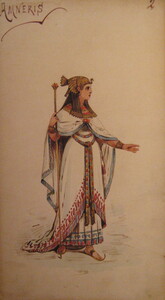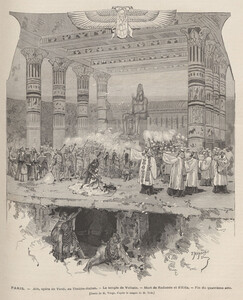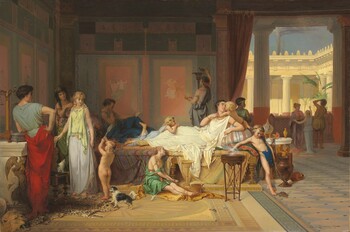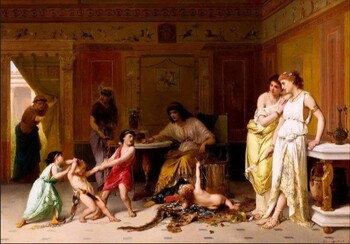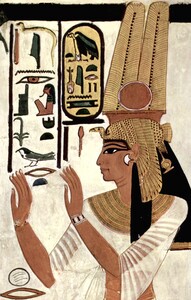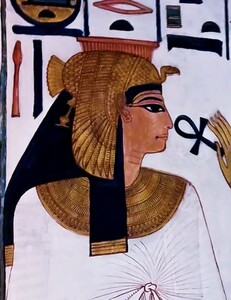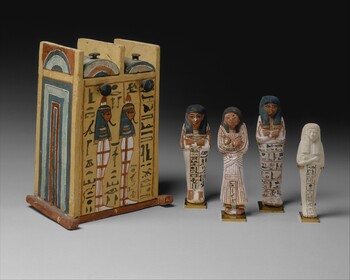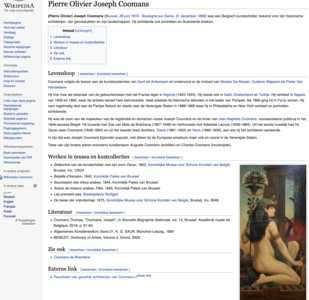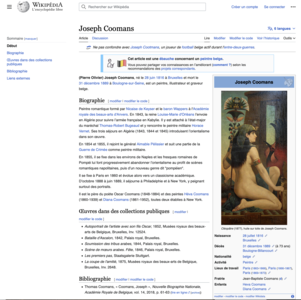5.500 €
Princess Amneris from Giuseppe Verdi’s opera Aida
Oil on canvas : 122,5 X 61 cm
Signed and dated lower right “J.Coomans 1877”
Frame : 125,9 X 64,7 cm
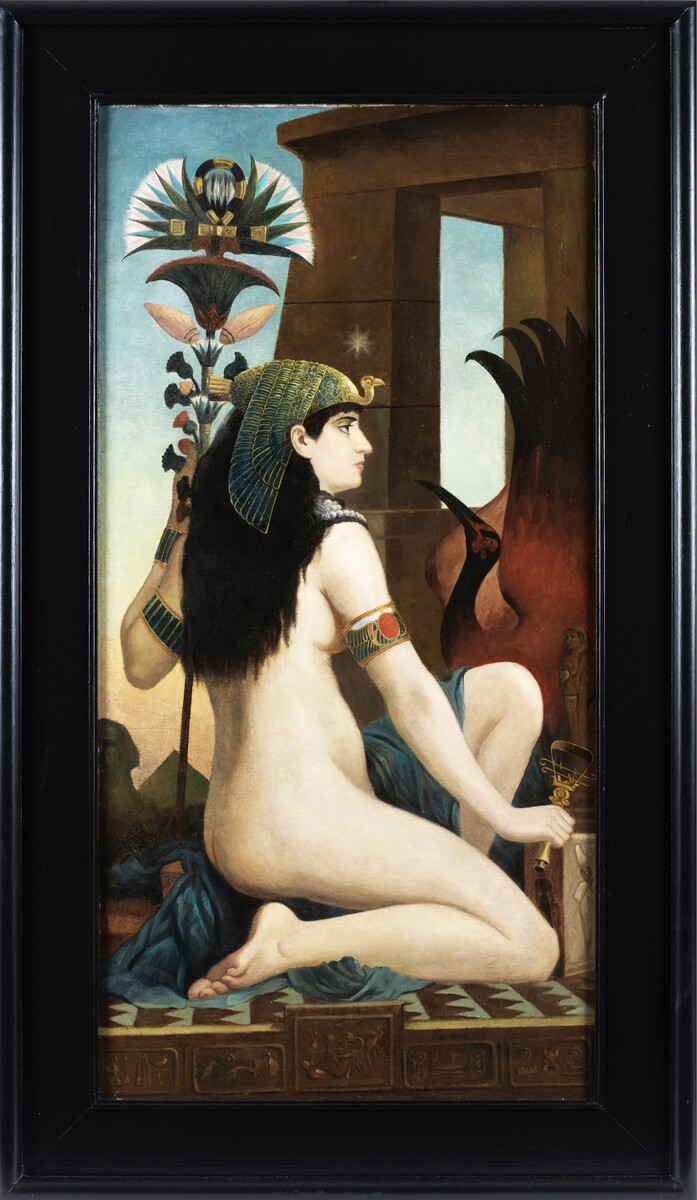
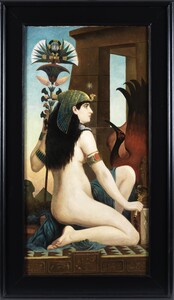
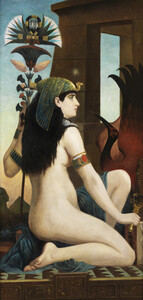
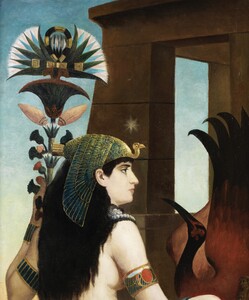
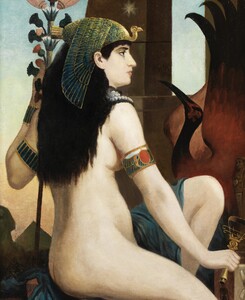


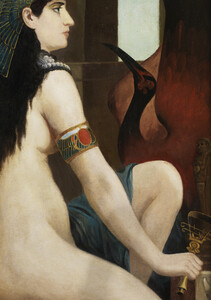
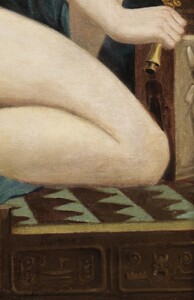
In short
Joseph Coomans was a Belgian painter who knew his greatest successes in Paris where he settled in 1860.
Our painting dates from 1877. It stands out within the artistic production of Coomans, who painted academic, highly detailed reconstructions of ancient Roman life and portraits of young, sensual Oriental or Antique women.
This painting must represent one of the major characters of the opera Aida by Giuseppe Verdi: Princess Amneris. In fact one year before Coomans painted this Egyptian figure, in April 1876, was the French première of Aida at the Théatre-Lyrique Italien in Paris.
About (Pierre Olivier) Joseph Coomans
Belgian painter
Brussels 1816–1889 Boulogne-sur-Seine (Boulogne-Bilancourt, near Paris)
From his first marriage he had a son, Oscar-Jean (1848–1884), who was a poet. From his second marriage with Adelaide Lacroix (1838–1884) he had two daughters, who both also became painters: Héva (1860 – 1939) and Diana (1861 – 1952)
Joseph (and inspired by him also his two daughters) specialised in academic, detailed scenes recording the life of the Roman inhabitants of Pompei shortly before the devastating eruption of Mount Vesuvius in 79 AD.
Joseph Coomans had a rather adventurous and interesting life. He trained as a Romantic painter in Belgium and he became (at the demand of Queen Louise-Marie of Orléans, wife of the First Belgian King, Leopold I) a military painter in Algeria (1843-1845), where he was influenced by Orientalism. He also covered the Crimean War in 1854 and 1855, before settling near Naples in 1855, where he got inspired by the fresco paintings discovered in and around Pompei.
In 1860 he moved to Paris where he was successful with his historic, highly-finished views of ancient Roman life and with his exotic portraits of young women. As he sold well in the United States, he travelled there with his family between October 1888 and June 1889, staying in Philadelphia and in New York. He returned to Paris and died a few months later, 31st of December 1889.
Both his daughters, Héva and Diana, moved permanently to New York in 1910, where they became well introduced. Both joined the Long Island High Society as listed artists.
About our painting
One should see this painting against the background of the sudden rise of popularity of Pharaonic Egypt. During the 19th century many, often monumental discoveries were shipped to the Louvre, the British Museum and the Egyptian Museum of Turin. Already in 1824 Champollion had deciphered the Egyptian hieroglyphs. In 1869 opened the Suez Canal. The most popular of all operas, Aida by Giuseppe Verdi, was written for that occasion, although its première in Cairo was postponed until Christmas eve 1871. Its French première was in April 1876, at the Théatre-Lyrique Italien in Paris, one year before Coomans painted our Egyptian figure. One year later Coomans painted this figure. His Princess Ameris seems to be a nude version of the opera figure.
Only Egyptian queens, princess or a high-ranking priestess would wear the so-called Vulture Crown, referring to the goddess Nekhbet, the patron of Upper Egypt. That is why our figure must represent Princess Amneris, daughter of Pharaoh, and not Aida, who was an enslaved Ethiopian princess.
In her right hand she is holding a sistrum, which was a religious music instrument. Before her stands a sacred ibis. One can also just see an Ushabti figurine and the painted box that would hold such a figurines. Ushabti or Shawabti were extremely practical grave goods: in case the deceased was called upon in the afterlife to work on the fields or to do any manual labour, one of the statues would take his place. At left Coomans has painted sunset over Giza: one sees part of the Great Sphinx and the Pyramid of Khafre.
Incidentally, when you look for Joseph Coomans on Wikipedia, both in French and Dutch, there is only one photograph of a painting by the artist: ours, which is there called Cleopatra.
Why should you buy this painting?
Because it is a very early testimony of Western love for Ancient Egypt.

